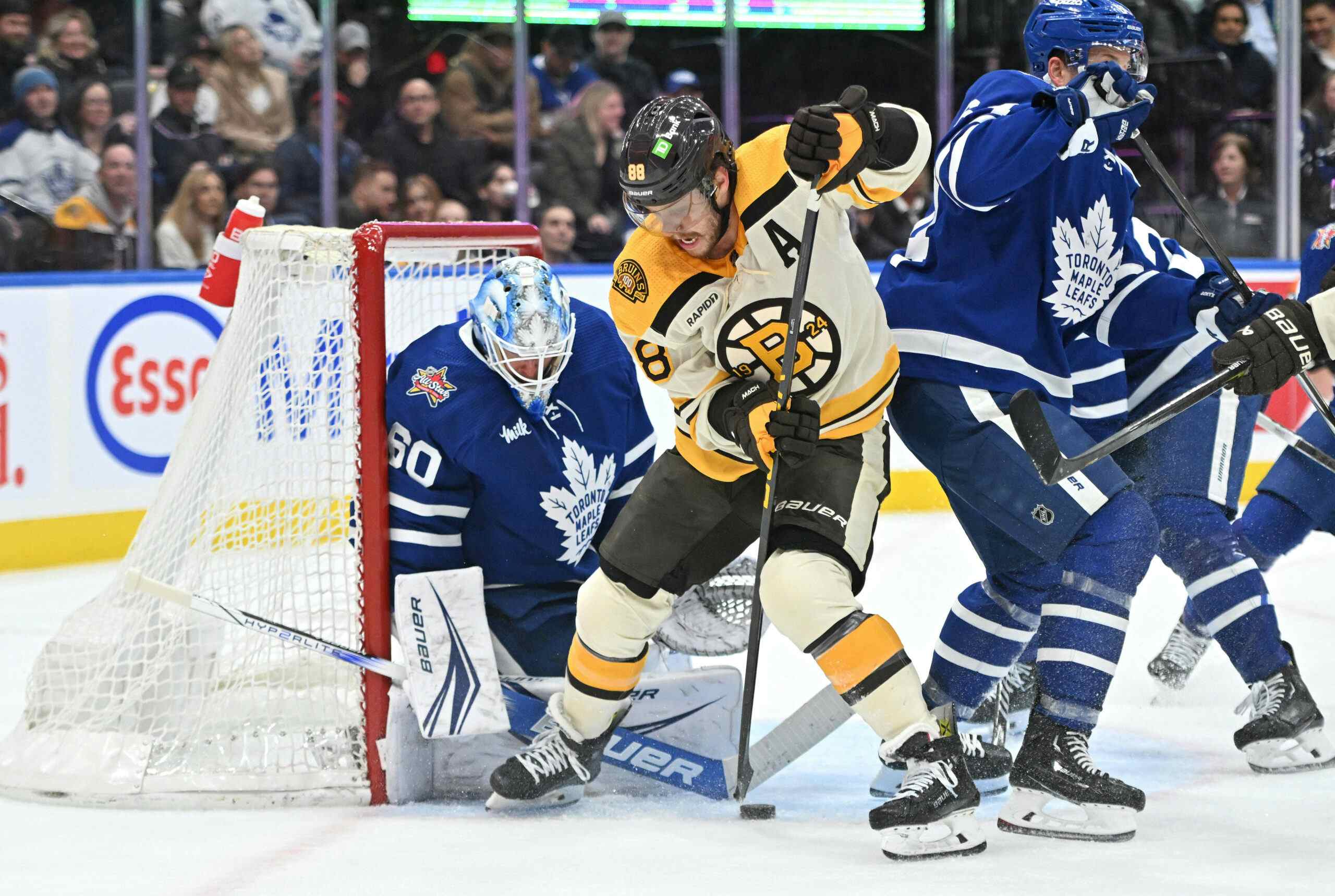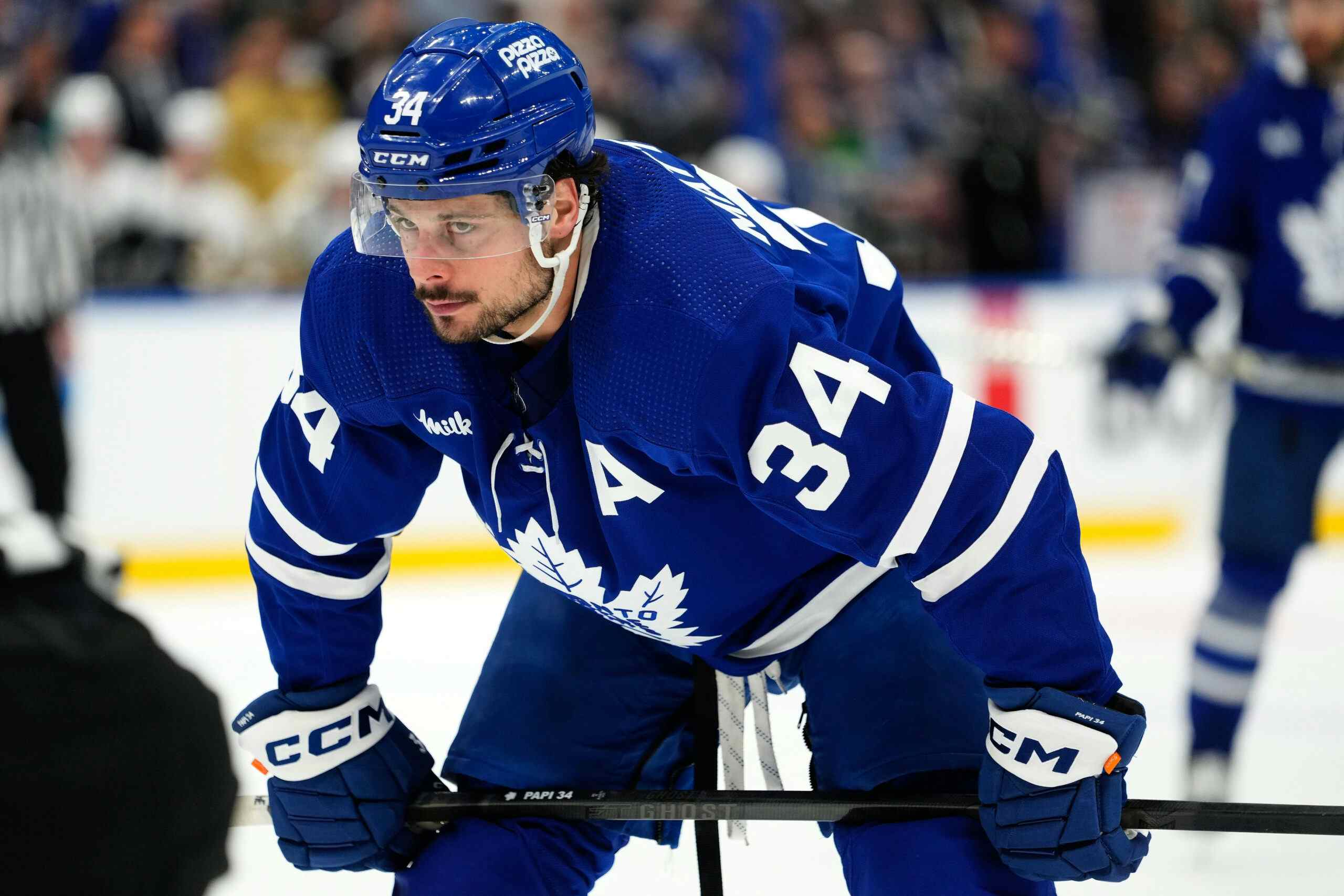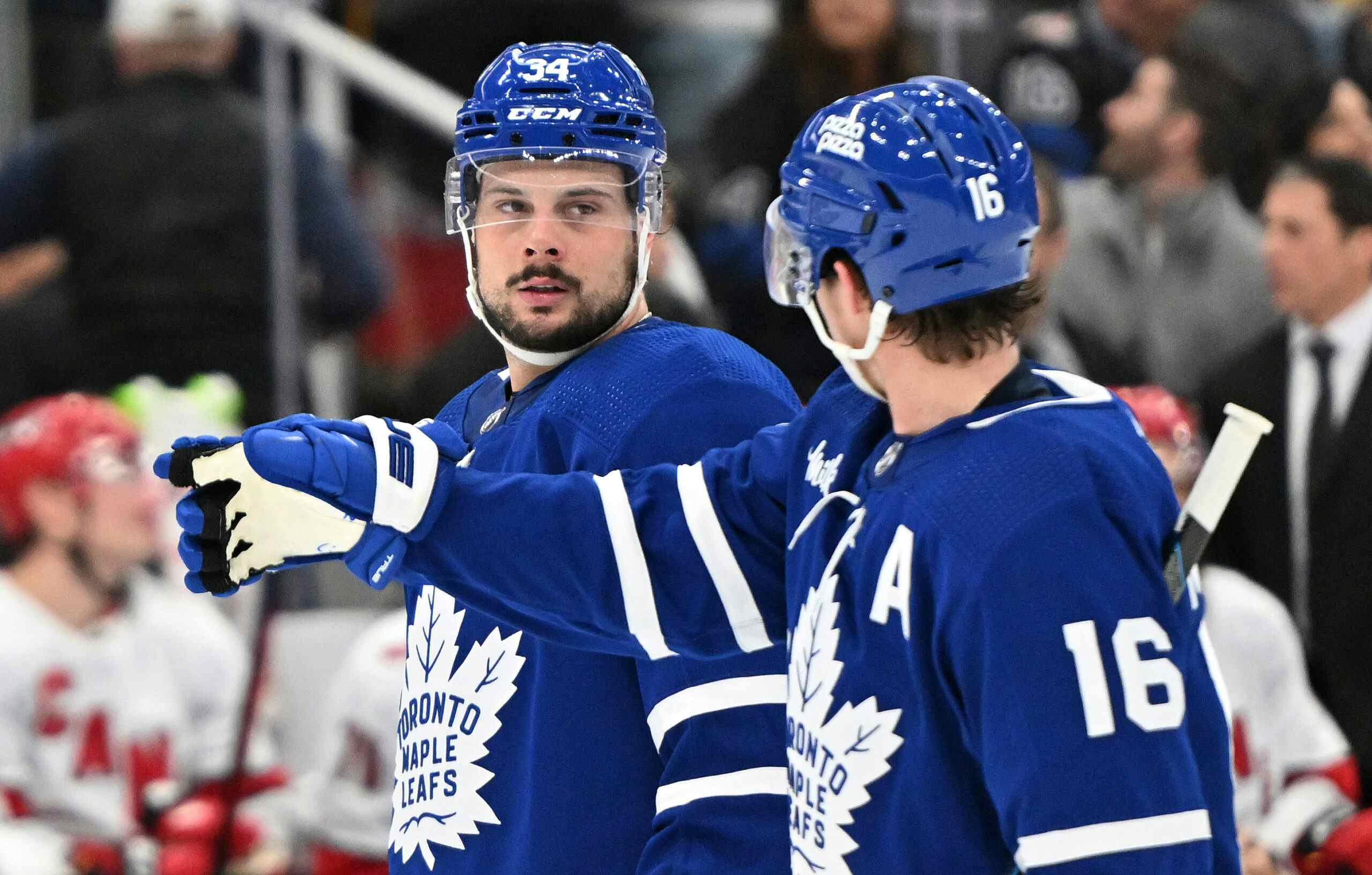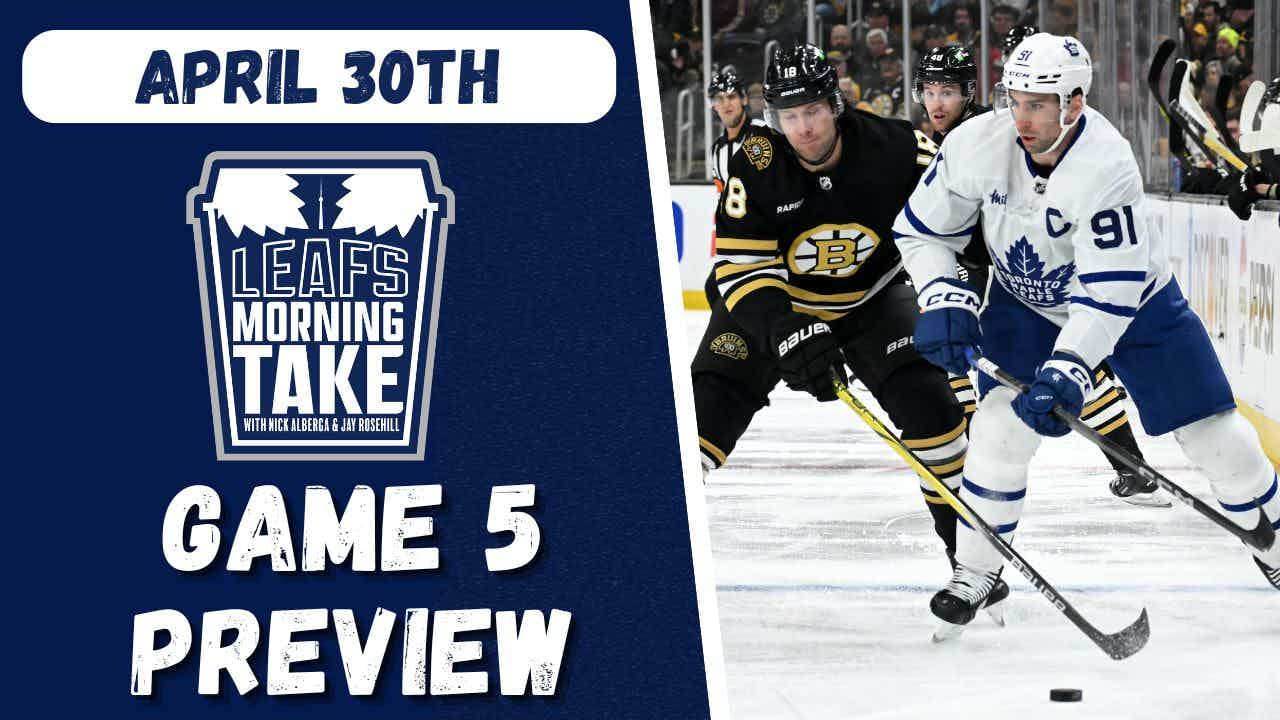Free Agents and the Babcock Factor – Myths and Realities
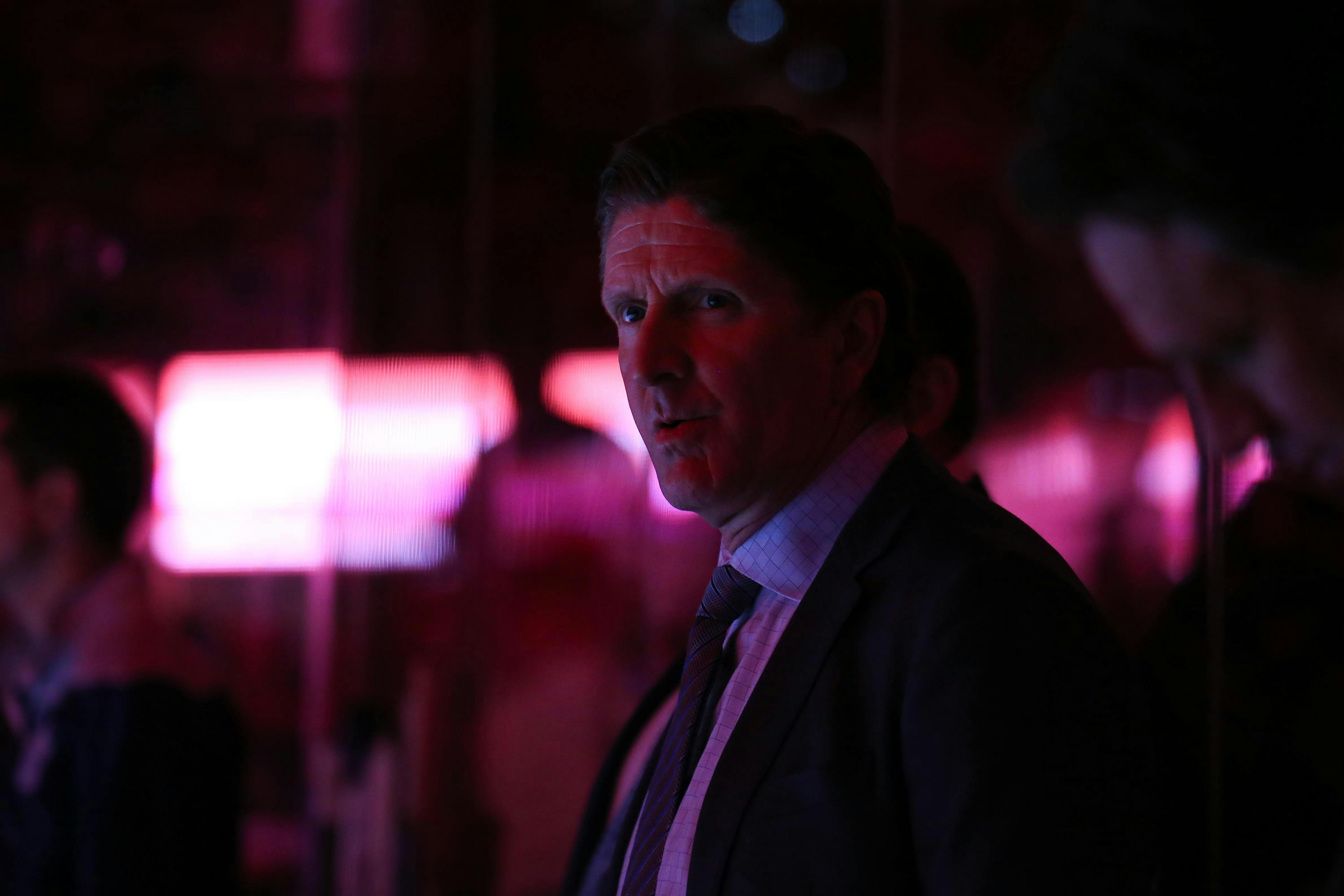
By Greg Brady
7 years agoCaught up in the middle of a live-and-die Eastern Conference playoff race, what’s the fun of not having a distraction or two filled with theories, conspiracy and otherwise, about the impact of the Leafs’ larger-than-life head coach and the potential for NHL UFAs to want to or not want to play for him? I mean, does Glen Gulutzan have socks named after him? No, he does not.
This all kicked off on during a chat with a Detroit radio host named Jeff Riger (disclosure: I know him, was never colleagues with him, not all that familiar with his hosting, but his quizzing of Chelios was fair) interviewing Hockey Hall of Famer Chris Chelios, who is currently on the Red Wings’ coaching staff (though not behind the bench with head coach Jeff Blashill).
You can listen to the interview exchange here being discussed by Hockey Central at Noon, and Elliott Price & I did the same on our morning show on Sportsnet 590, The Fan.
There’s a lot of different layers to this, all told, and yes, maybe of all the issues that could be discussed about Babcock and the Red Wings, and how he is now, I’m possibly as qualified as anyone, outside of some excellent national insiders who’d stay connected in the NHL pipeline more than I’ve been able to do the past couple years.
Failed to load video.
In Babcock’s first season in Detroit post-lockout, he was a late hire just prior to the 2005-06 season as he rejected a one-year extension in Anaheim from Brian Burke, and given Burke’s preference to promote Randy Carlyle from the AHL’s Manitoba Moose, the Ducks weren’t disappointed to watch him leave. As for Detroit, Ken Holland, who has deserved criticism the past few years for some questionable contract extensions to veteran players and free agent signings, made a masterful though emotional move, in dumping head coach Dave Lewis, who’d been with the team in a coaching capacity for close to 20 years with the Red Wings since retiring as a player in the late 1980s.
When Scotty Bowman retired after the 2002 Stanley Cup victory, Lewis ascended to the head coaching job and despite two stellar regular seasons, they went 6-10 in playoff games and the two early exits had impatient fans already shouting for change there. In addition, he alienated the likes of Curtis Joseph, Sergei Fedorov (who bolted after one Lewis-coached season to Anaheim where Babcock was, ironically), and Brett Hull.
So Babcock inherited an older and very set-in-their-ways roster for the 2005-06 season. And in a new salary cap world, the Red Wings simply didn’t have room to chase free agents unless veteran players decided to retire or sign elsewhere. In fact, the team was in flux because they had to buy out then-useful contracts like that of Derien Hatcher, Ray Whitney, and Darren McCarty. Not ideal for a new head coach, in all reality. Now, after the Red Wings six-game defeat to the Edmonton Oilers (their most recent playoff appearance until a couple weeks from now), Steve Yzerman called it quits at the age of 40, certainly more because of his painfully gimpy knees than who his coach was, and surprisingly, Brendan Shanahan spurned a reasonable but somewhat more modest contract offer to basically retire a Red Wing by taking a $4 million/1 year deal with the New York Rangers. His quote is and was telling: “I guess I just felt that maybe I was identified with the past a little bit more than the future.”
My experience covering that team was Babcock absolutely had to make an impact and win the room right away, not by being popular, but by being aggressive — he certainly had achieved success in Anaheim by making many veteran players accountable and driven to be more than they had previously been in their careers. Did all veteran players there embrace it? Not in the least — despite the Game 7 Final appearance against New Jersey, leading scorer Paul Kariya signed a short-term deal to join prior linemate Teemu Selanne (he’d been traded from Anaheim to San Jose prior to Babcock being promoted from Cincinnati in the AHL) on the second line in Colorado with the Avalanche. Some element of that is chasing a Cup, but Kariya and Babcock were reported to have been at odds several times in Anaheim over linemates, and approaches to winning. Sound familiar?
But players care about winning and the Red Wings still had that pull. Following that 2006 summer’s defections of Yzerman and Shanahan, it was clear the team would build around a 28-year old Pavel Datsyuk, and a 25-year old Henrik Zetterberg. And though it’s easy in retrospect to the tell the Red Wings like any other team to “build through the draft”, can you do that, with either no first round pick in many of those years, or a pick in the high 20’s out of 30 first-round picks?
Despite getting free agents like Brian Rafalski (in essence, a younger and more offensively-gifted replacement for the departing Mathieu Schneider who left after the 2007 season to sign with newly-crowned Cup champion Anaheim (them again!) and following Detroit’s title in 2008, Marian Hossa (he’d sign a $9 million/1 year deal to try and win that elusive Cup after his Penguins were knocked off by Detroit basically a couple weeks earlier), there weren’t many more roster add-ons Babcock could make.
The Red Wings either liked the veterans they had, or they simply didn’t have cap room after those Rafalski and Hossa moves (and adding Dominik Hasek back for a THIRD Red Wings tour of duty, with previous Cup winner Chris Osgood as his backup).
Every team with stars still needs younger and cheaper players to fill the depth chart and play effective minutes if that organization wants to still be a Cup contender, and Detroit did, and still was. They found key roles for 2002’s 63rd (Jiri Hudler) and 95th (Valtteri Filppula) picks in their Top 9 forwards. Babcock certainly deserves great credit for their development, as do the players. Those are far from advantageous drafting positions, but good teams (see Chicago and Pittsburgh and Tampa) hit some great spots at the dartboard from spots like 63rd and 95th, don’t they?
In the next two Drafts, the Red Wings found an eventual consistent starting goaltender in Jimmy Howard (in the post-Osgood era) at 64th overall, and the following year in 2004, used the highest pick they had at 97th overall to grab Swede Johan Franzen. Drafted as an adult of 24 years of age, Franzen stepped immediately into Babcock’s initial Wings’ lineups in 2005-06 and continued to develop and improve. He’d certainly never be the same player after 2011-12 when multiple concussions and other maladies left him a true shell of his former effective self. For clarity’s sake, Franzen is owed another three years of money ($4M cash total on a $3.5M/year cap hit, covered by LTIR) but no one in or out of the organization ever expects him to risk playing again.
Babcock received three full-time players through the 2005 NHL Entry Draft in first-round defenceman Jakub Kindl, and forwards Justin Abdelkader (2nd round) and Darren Helm (5th round). By the time those players started playing regularly, it is valid to note that there weren’t significant free agents being acquired by the Red Wings. After 2009, Chicago was the division powerhouse, not Detroit, and the rising fortunes of both the Blues and the Predators meant a lot of uncertain moments for the Red Wings in the regular season and the playoffs.
The Red Wings with Babcock would never again make the Conference Finals, winning only three playoff series in the last seven seasons with Babcock, and they were first-round cannon fodder last year for a much deeper and better-coached Tampa Bay Lightning team in Jeff Blashill’s first season as head coach.
Over the past half-decade the only rather elite free agent that seemed to even sniff at Detroit was eventual Minnesota Wild blueliner Ryan Suter, and as Chelios noted in his radio chat, in his estimation, Babcock was a strike against (not for) coming to Detroit. The organization was laughed at in league circles for questionable repeat signings for older Red Wings whose time had come and gone, such as Todd Bertuzzi, Daniel Cleary (more than once), and Mikael Samuelsson. They struck out as badly as any team has struck out on a free agent in the past decade with a multi-year deal for Stephen Weiss — a player Babcock had sought out and asked for, if possible.
The Red Wings signed Weiss to a 5-year, $24.5M contract, and he proceeded to score 11 goals in 78 games over two seasons, and was promptly bought out of his deal. He hasn’t hit the ice since then professionally.
Two free agent signings did happen in Babcock’s last few years, but both players (and eventual Hall of Famers) had disappointing productivity, somewhat so in Daniel Alfredsson’s case, and certainly so in Michigan native Mike Modano’s case, with the latter being a healthy for many late-season games and most of the playoffs. In fact, Modano got stuck on 1499 career regular season games, and the team didn’t bother to get him in the lineup to reach the 1500 milestone, before he was a scratch in nine of the Wings’ eleven playoff contests.
So, lots of data to absorb — what does it all mean for the Maple Leafs going forward?
To me, any coach in a scenario where the team isn’t winning will grind players down over time. I witnessed it first-hand with Scotty Bowman, and yet Steve Yzerman, Brendan Shanahan, Sergei Fedorov, even the mild-mannered Igor Larionov – they all had their moments with Bowman, but it’s tough to rock the boat on a veteran-laden room that’s a perennial Cup contender and their coach is the winningest all-time. I’d bet you there are plenty of veteran players with the New England Patriots and the San Antonio Spurs, who if you catch them in the wrong moment, would love to go town on a Belichick or a Popovich.
When the Red Wings stopped winning, I don’t doubt it became a harder pill for the veteran players there to absorb. Professionals don’t like to lose. It’s a pretty common and well-sourced assumption Pavel Datsyuk was threatening internally to head back to Russia and play in the KHL even a year earlier than he did last summer if Mike Babcock was extended as head coach during those dramatic couple weeks in May 2015. Babcock’s departure placated Datsyuk to give one more year to the Red Wings, all despite the fact he’d agreed to a three-year contract, and him bolting last summer forced the Wings into a series of moves that I think ultimately they’ll regret. Ken Holland ended up finding a buyer (the Coyotes!) for the Datsyuk contract, but then with some unrealistic expectation on his management’s group’s part to ownership pressure to keep their playoff streak alive, they went and spent that money in ways in which I think they’d admit made little sense last summer.
I am sure there are Leafs players of a veteran ilk who have found Babcock very in their faces and demanding, but there’s a sense of accomplishment he brings that even well-established coaches like Randy Carlyle and Ron Wilson weren’t bringing to the Leafs dressing room over the last nine years.
This summer is an interesting testing ground for what the Maple Leafs want to do with free agency, but to me, 2018’s summer is the most interesting one, because of greater free agent depth (yes, I’m aware several of the names out there potentially won’t be given they’ll re-sign with current clubs), but if the team is continuing to ascend in terms of both the standings and the reputation of being “back”, I do think players will be very intrigued to hear a sales pitch. There’s a lot more to listen to now than there would have been for a Brad Richards in the summer of 2011, or even a Steven Stamkos last summer.
If anything, when John Tavares becomes a free agent, his biggest questions may not necessarily be about Mike Babcock (who he’s obviously played for in Team Canada duties) but where he slots in as a Top 6 forward. Is a 28-year old John Tavares playing ahead of a 20-year old Auston Matthews? I’d argue he isn’t, and even he is, how long does that last given Tavares is probably inking to be with a new team (if it isn’t the Islanders) until he’s 35 years old.
They’re fun questions to ask, aren’t they? But I think a lot of the Red Wings’ history and infrastructure factored into the lack of free agent “wins” for them over the last several years, and I don’t doubt Babcock played a role in some players being wary about taking that on. But if the money and terms are right, if the city is attractive, and the team can win, to be honest, an awful lot of players have said “yes” to the Leafs in the last 20 years — and to play for hard-nosed coaches like Pat Burns and Pat Quinn. You think Mike Babcock is any more or less fun or demanding than those two were?
Curtis Joseph, Gary Roberts, and Shayne Corson spurned all others to come to Toronto when the going was good. Ed Belfour leaped at the chance to take a deep Leafs team to Cup glory. Joe Nieuwendyk, Dave Andreychuk, and Mike Gartner all embraced wearing the blue and white when the going was good. Though the league has evolved, the Cap isn’t going away, and free agency is very, very different than that long-past era, I hardly think Mike Babcock will be a player’s deciding factor if Toronto comes calling, and winning not just a blueprint, but a reality.
Recent articles from Greg Brady

